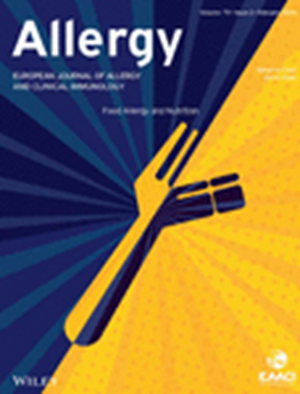伴侣动物上皮屏障功能障碍及相关疾病:人类与动物的异同及研究需求。
IF 12.6
1区 医学
Q1 ALLERGY
引用次数: 0
摘要
自 20 世纪 60 年代以来,已有超过 35 万种新化学物质进入人类和家畜的生活。其中许多已成为现代生活的一部分,有些则作为污染物影响着大自然。然而,我们对它们对人类和动物的潜在健康风险的了解仍然很片面。上皮屏障理论 "认为,遗传倾向和暴露于破坏上皮屏障的各种因素会导致过敏性和自身免疫性疾病的出现。在大量粘膜炎症、自身免疫性疾病和神经精神疾病中都观察到了上皮屏障受损、微生物失调和组织炎症的现象,其中许多疾病在过去几十年中发病率有所上升。宠物,尤其是猫和狗,与人类共享生活空间,并接触家用清洁剂、个人护理产品、空气污染物和微塑料。宠物化妆品和食品添加剂的使用呈上升趋势,遗憾的是,与人类产品相比,宠物化妆品和食品添加剂的安全法规并不严格。在这篇综述中,我们探讨了上皮屏障紊乱对伴侣动物健康的影响,并将其与人类进行了比较,努力阐明困扰伴侣动物的各种疾病。此外,我们还根据 "同一健康 "理念,强调了人类、动物和环境福祉相互关联的未来研究领域。本文章由计算机程序翻译,如有差异,请以英文原文为准。
Epithelial barrier dysfunction and associated diseases in companion animals: Differences and similarities between humans and animals and research needs.
Since the 1960s, more than 350,000 new chemicals have been introduced into the lives of humans and domestic animals. Many of them have become part of modern life and some are affecting nature as pollutants. Yet, our comprehension of their potential health risks for both humans and animals remains partial. The "epithelial barrier theory" suggests that genetic predisposition and exposure to diverse factors damaging the epithelial barriers contribute to the emergence of allergic and autoimmune conditions. Impaired epithelial barriers, microbial dysbiosis, and tissue inflammation have been observed in a high number of mucosal inflammatory, autoimmune and neuropsychiatric diseases, many of which showed increased prevalence in the last decades. Pets, especially cats and dogs, share living spaces with humans and are exposed to household cleaners, personal care products, air pollutants, and microplastics. The utilisation of cosmetic products and food additives for pets is on the rise, unfortunately, accompanied by less rigorous safety regulations than those governing human products. In this review, we explore the implications of disruptions in epithelial barriers on the well-being of companion animals, drawing comparisons with humans, and endeavour to elucidate the spectrum of diseases that afflict them. In addition, future research areas with the interconnectedness of human, animal, and environmental well-being are highlighted in line with the "One Health" concept.
求助全文
通过发布文献求助,成功后即可免费获取论文全文。
去求助
来源期刊

Allergy
医学-过敏
CiteScore
26.10
自引率
9.70%
发文量
393
审稿时长
2 months
期刊介绍:
Allergy is an international and multidisciplinary journal that aims to advance, impact, and communicate all aspects of the discipline of Allergy/Immunology. It publishes original articles, reviews, position papers, guidelines, editorials, news and commentaries, letters to the editors, and correspondences. The journal accepts articles based on their scientific merit and quality.
Allergy seeks to maintain contact between basic and clinical Allergy/Immunology and encourages contributions from contributors and readers from all countries. In addition to its publication, Allergy also provides abstracting and indexing information. Some of the databases that include Allergy abstracts are Abstracts on Hygiene & Communicable Disease, Academic Search Alumni Edition, AgBiotech News & Information, AGRICOLA Database, Biological Abstracts, PubMed Dietary Supplement Subset, and Global Health, among others.
 求助内容:
求助内容: 应助结果提醒方式:
应助结果提醒方式:


